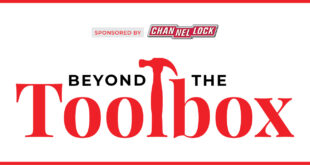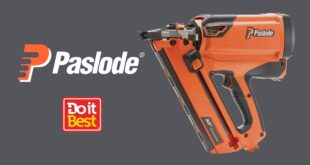There are two common reasons a DIYer will come to you for a power tool: They are replacing one that is outdated or broken or they’re taking on a project that requires a new tool. According to data from the Home Improvement Research Institute’s (HIRI) 2020 Power Tools and Accessories Product Purchase Tracking Study, 35 percent of power tool purchases were the result of a planned repair or replacement.
What’s interesting to note about these types of customers is that their knowledge level is likely fairly different and yet they both present an opportunity for an add-on sale or upsell. The key to making that sale is for your team to have product and project knowledge.
Get insights on the next page into the projects DIYers are doing that lead to making power tool and accessory purchases. Also, review selling skills best practices to help your customers make the right choices for their skill level and project type.
Get the Whole Picture
According to the HIRI report, more than 50 percent of power tool purchasers considered themselves “home investors,” which can be a key entry point for an upsell or an add-on sale. That doesn’t mean they were renovating an investment property; it means they prioritize renovation projects that will offer a recognizable return on investment when selling.
The National Association of REALTOR®’s 2019 Remodeling Impact Report says complete kitchen renovations result in a 59 percent ROI and a bathroom renovation earns a 57 percent ROI. If a customer says they are taking on these projects, it can be a clue they are willing to invest in high-quality tools or accessories.
No Stone Unturned
Room renovations throughout the home—kitchen, bath and general room remodels—were the most frequent project associated with the purchase of a variety of tools and accessories, including drills, sanders, circular saw blades and nail guns in the HIRI report. These results suggest that although someone may make an initial purchase for one project, they will use the same tool for another project in the future.
Another quality respondents noted on the survey is that they are often “one-stop shoppers,” who want to get everything they need in one visit. To best serve these customers, take notes while they are talking about their project and ask them follow up questions as necessary. For instance, if they are replacing tile in a bathroom and haven’t mentioned a saw or blade, that’s an entry point to be sure they understand what they need to cut tile accurately and safely. It also saves them a return trip to the store—or a competitor.
The Final Piece
One of the most challenging parts of making a sale is the final step: Asking the customer for the sale. This is especially true for high-value sales. The key to getting through any nerves or missteps with this part of selling is to know you have gathered all necessary information to set your customer up for success. The final key is to ask for the sale, as simply as saying, “We’ve checked off all the items on your list. Are you ready to check out?”
 Hardware Retailing The Industry's Source for Insights and Information
Hardware Retailing The Industry's Source for Insights and Information








